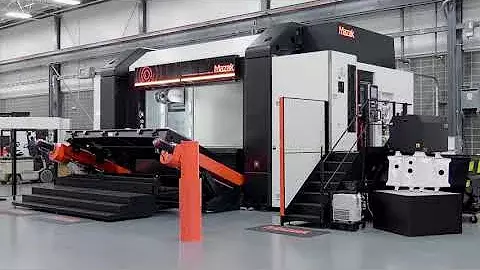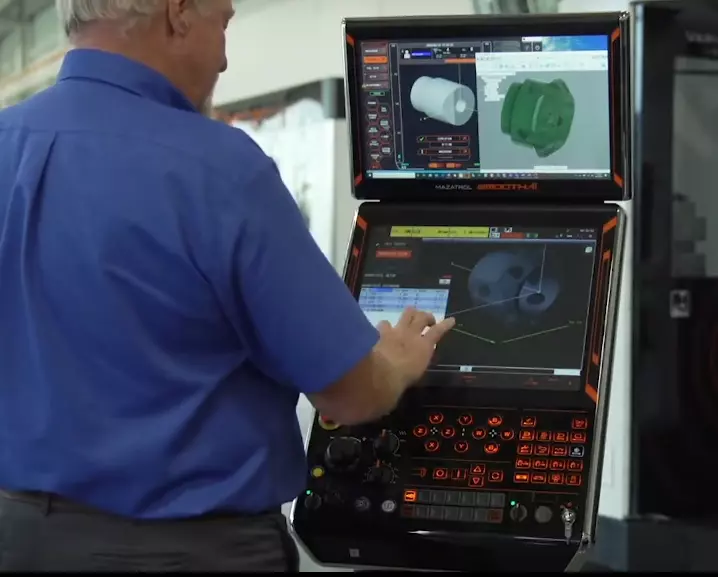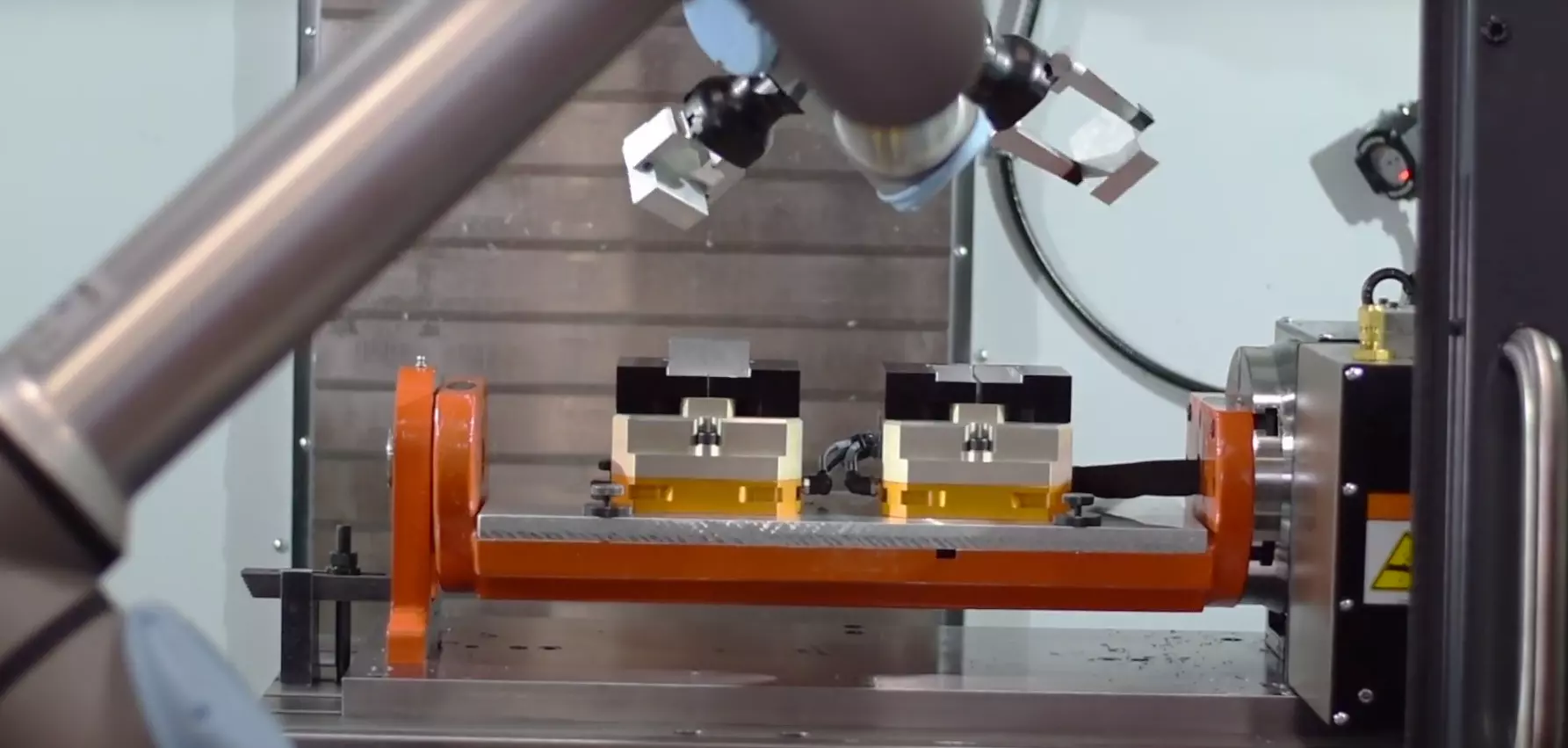In a world rapidly transforming through technological innovation, Computer Numerical Control(CNC) machining goes ahead faster than other industries by shaping various industries like automotive, aerospace, and medical sectors.
CNC technology, utilizing programmed software dictates the movements of factory tools and machinery, machining raw materials into customized finished products with a precision never seen before. Innovation and adaptability form its underpinning ethos, redefining efficiency and complexity in manufacturing. Yet, CNC machining, even with its array of advantages, isn’t without its challenges.

This blog post dives into the workings of the technology, its widespread application, the struggles it currently faces, and the noteworthy technological advancements that continue to revolutionize this sphere. Also, it painterly sketches a glimpse into its future, carefully outlined from industry expert predictions and emerging trends.
- Key Takeaways of this post:
- a) Automotive Industry
- b) Aerospace Sector
- c) Electronics
- d) Construction Industry
- e) Arts and Crafts
- a) Capital Costs
- b) Technological Evolution
- c) Environmental Impact
- d) Sound Pollution
- a) Predictive Analytics and AI Integration
- b) IoT in CNC Machining
- c) Virtual Reality (VR) Applications
- d) Rapid Tooling Advancements
- e) Additive Manufacturing in CNC
- f) Collaborative Robots (Cobots)
- g) Challenges and Future Outlook
- What is CNC Machining?
- Why is predicting the future of CNC Machining important?
- What are some emerging trends in CNC Machining?
- How will automation impact the CNC industry?
- What is hybrid machining?
- How is sustainability becoming a part of CNC machining?
- What role will artificial intelligence (AI) play in CNC machining's future?
- How can I keep up with the latest trends in CNC machining?
- Will these advancements in CNC machining lead to job losses?
- How will the integration of IoT (Internet of Things) benefit CNC machining?
- Are there any concerns related to the increasing digitization of CNC machining?
- How do these trends impact the global competitive landscape of the manufacturing sector?
Key Takeaways of this post:
- Adaptation and Growth: CNC machining is poised for significant growth, adapting to various industries’ needs, from automotive to arts and crafts, indicating its versatile applications.
- Technological Integration: The future of CNC machining is tied closely to advancements in AI, IoT, and VR, suggesting a trend towards smarter, more interactive systems.
- Efficiency and Precision: With the integration of advanced technologies, CNC machining will continue to enhance operational efficiency and precision, crucial for industries where error margins are extremely low.
- Sustainability Focus: The industry is moving towards more sustainable practices, balancing technological advancements with environmental responsibility.
- Economic Considerations: Despite its advancements, CNC machining faces financial hurdles, particularly for small and medium enterprises, due to high initial investment costs.
- Workforce and Environment: The evolving landscape indicates a future need for skilled workers to manage advanced systems, highlighting the importance of education and training. Additionally, creating a safer work environment by reducing sound pollution and other hazards is becoming increasingly important.
- Collaborative Operations: The introduction of cobots points to a future where human workers and robots collaborate more closely, combining human adaptability and creativity with the precision and stamina of machines.
- Global Impact: These advancements in CNC machining are set to have a broad impact on the global manufacturing landscape, pushing companies to innovate and adapt to maintain competitiveness.
1) The current landscape of CNC machining
a) Automotive Industry
CNC machining has transformed the automotive landscape by manufacturing precise engine components, custom knobs, brackets, and exhaust systems. This ensures enhanced design and reduced vehicle weight. The ability to customize parts eliminates discrepancies associated with manual production.
b) Aerospace Sector
In aerospace, CNC machining is indispensable for producing aircraft parts like turbine components, engine casings, antennae, and landing gear doors. Processes that were once labor-intensive and error-prone are now streamlined and accurate, ensuring the safety and longevity of aerospace technology.
c) Electronics
CNC machining is pivotal in the electronics industry, shaping components such as motherboards, casings, and heat sinks. The microscopic precision required for these intricate pieces is achieved through CNC, reducing assembly time and enhancing product lifespan.
d) Construction Industry
In construction, CNC machining aids in architectural drafting, millwork, and the creation of precise templates and molds. It controls cutting, molding, and drilling, making the production of custom parts more accessible and profitable without compromising product integrity.
e) Arts and Crafts
In the artistic domain, CNC machining facilitates the creation of large sculptures, intricate jewelry, and detailed woodwork. The technology ensures precision in these creative ventures, enhancing the overall artistic process.

2) Present-Day Challenges in CNC Machining
a) Capital Costs
Advanced CNC machines with high precision and flexibility come with significant costs, posing challenges especially for SMEs. Initial investments include equipment purchase, infrastructure setup, and power supplies. Additionally, expenses related to spare parts, maintenance, and upgrades further increase the financial burden.
b) Technological Evolution
CNC machines, initially designed for automation, now face the challenge of integrating with emerging technologies like AI, IoT, and big data analytics. This constant evolution requires continuous skill and software upgrades. CNC operators must balance the benefits of technological advancements with the demands of continuous learning.
c) Environmental Impact
CNC machining processes are associated with high energy consumption, contributing to cost and carbon emissions. With a global focus on sustainability, the industry is pressured to adopt more eco-friendly practices. Additionally, CNC machining generates waste as a subtractive(material removal) process. Traditional waste management methods might not fully utilize the potential value of this waste the need for recycling or using biodegradable materials.
d) Sound Pollution
The noise produced by CNC machines poses health risks for operators. While protective gear can offer some protection, the continuous noise can impact the psychological health of workers, highlighting the need for sound-reducing technologies.
3) Predicted Trends in CNC Machining
a) Predictive Analytics and AI Integration
Predictive analytics and artificial intelligence are set to enhance CNC machining efficiency, safety, and predictability. AI-driven algorithms will analyze real-time data, predicting maintenance needs, part lifetimes, and potential failure points, reducing downtime and improving productivity.
b) IoT in CNC Machining
New tool tracing technologies that integrate with an internet network in the factory allow operators, CNC programmers, and managers to sync and manage their jobs, preparations, and required tool orders.
c) Virtual Reality (VR) Applications
Virtual Reality (VR) offers the potential for CNC machine simulations and operator training. VR environments allow operators to practice in a low-risk setting, increasing safety and reducing training costs. In the near future, game engines will be more powerful so cutting simulations, and CNC machine setup practices can be done in a 3D environment that is connected to a remote real environment.
d) Rapid Tooling Advancements
Rapid tooling, powered by CNC machining, will expedite small-volume manufacturing and prototype development, offering businesses time and resource savings with more design flexibility.
e) Additive Manufacturing in CNC
The integration of additive manufacturing or 3D printing in CNC machining will enable the creation of intricate structures, pushing industrial design boundaries and introducing innovative material and design combinations.
f) Collaborative Robots (Cobots)
Collaborative robots, or “cobots”, designed to work alongside human operators, will enhance safety and productivity in CNC machining. This collaboration promises streamlined operations and increased precision. In the near future, cobots can handle complex packaging and finishing processes after CNC machining operations.

g) Challenges and Future Outlook
While these projections are promising, challenges like infrastructure investment, training, resource optimization, and digital integration security risks persist. However, with the ongoing advancements in CNC machining, these challenges seem surmountable. The future of CNC machining emphasizes sustainability, efficiency, and precision, aligning with modern world needs. As CNC machining continues to evolve, it promises increased automation, advanced AI and IoT integration, and broader machine learning applications. This evolution aims to balance human and machine roles, enhancing efficiency across industries. The CNC machining journey is ongoing, pushing manufacturing boundaries and exploring new horizons.
4) FQA
What is CNC Machining?
CNC (Computer Numerical Control) machining is a manufacturing process in which pre-programmed computer software dictates the movement of factory tools and machinery.Why is predicting the future of CNC Machining important?
By understanding the future trends in CNC machining, businesses and manufacturers can make informed decisions regarding investments, technology adoption, and strategic planning.What are some emerging trends in CNC Machining?
Some of the emerging trends include automation and robotics integration, adoption of artificial intelligence and machine learning for optimization, increased use of hybrid machining techniques, and a push towards sustainable and eco-friendly practices.How will automation impact the CNC industry?
Automation is expected to increase efficiency, reduce human error, and provide consistent product quality.What is hybrid machining?
Hybrid machining refers to combining multiple machining processes into a single setup.How is sustainability becoming a part of CNC machining?
Manufacturers are looking into using sustainable materials, reducing waste through optimized cutting strategies, and implementing energy-efficient machines and processes.What role will artificial intelligence (AI) play in CNC machining’s future?
AI can be used for predictive maintenance, real-time optimization of machining parameters, and adaptive control of machining processes.How can I keep up with the latest trends in CNC machining?
Staying updated with industry publications, attending trade shows, and participating in webinars or industry forums can help professionals stay abreast of the latest developments.Will these advancements in CNC machining lead to job losses?
While some manual tasks might be reduced, there will be an increase in demand for skilled technicians, programmers, and engineers.How will the integration of IoT (Internet of Things) benefit CNC machining?
IoT will allow machines to be interconnected, providing real-time data analysis, remote monitoring, and predictive maintenance.Are there any concerns related to the increasing digitization of CNC machining?
Concerns include cybersecurity threats, data privacy issues, and the need for continuous upskilling of the workforce.How do these trends impact the global competitive landscape of the manufacturing sector?
With advancements in CNC technology, manufacturers can produce higher quality products at faster rates.5) Conclusion
In conclusion, the future of CNC machining contains very much of efficiency, improvements, and opportunities.

